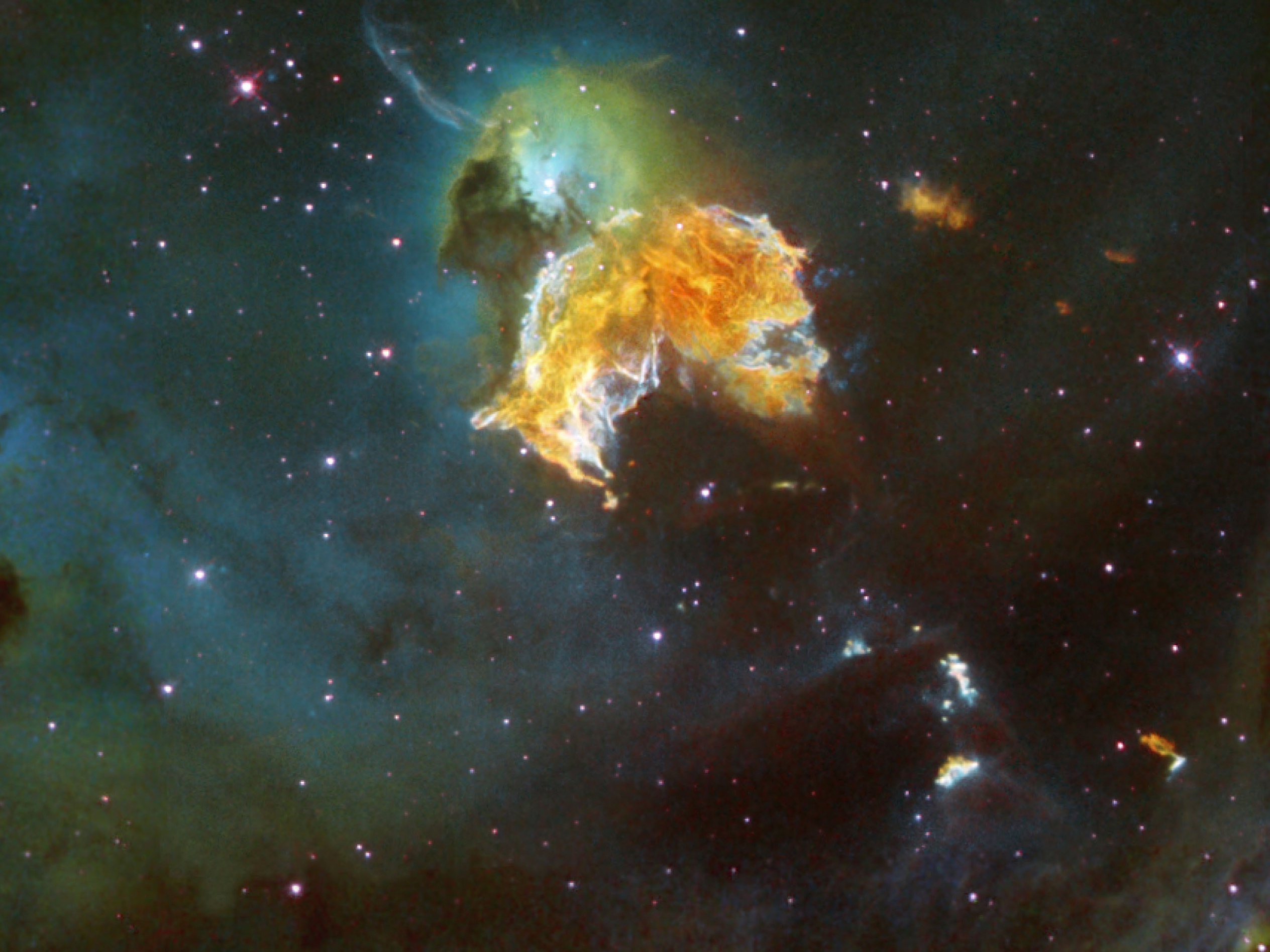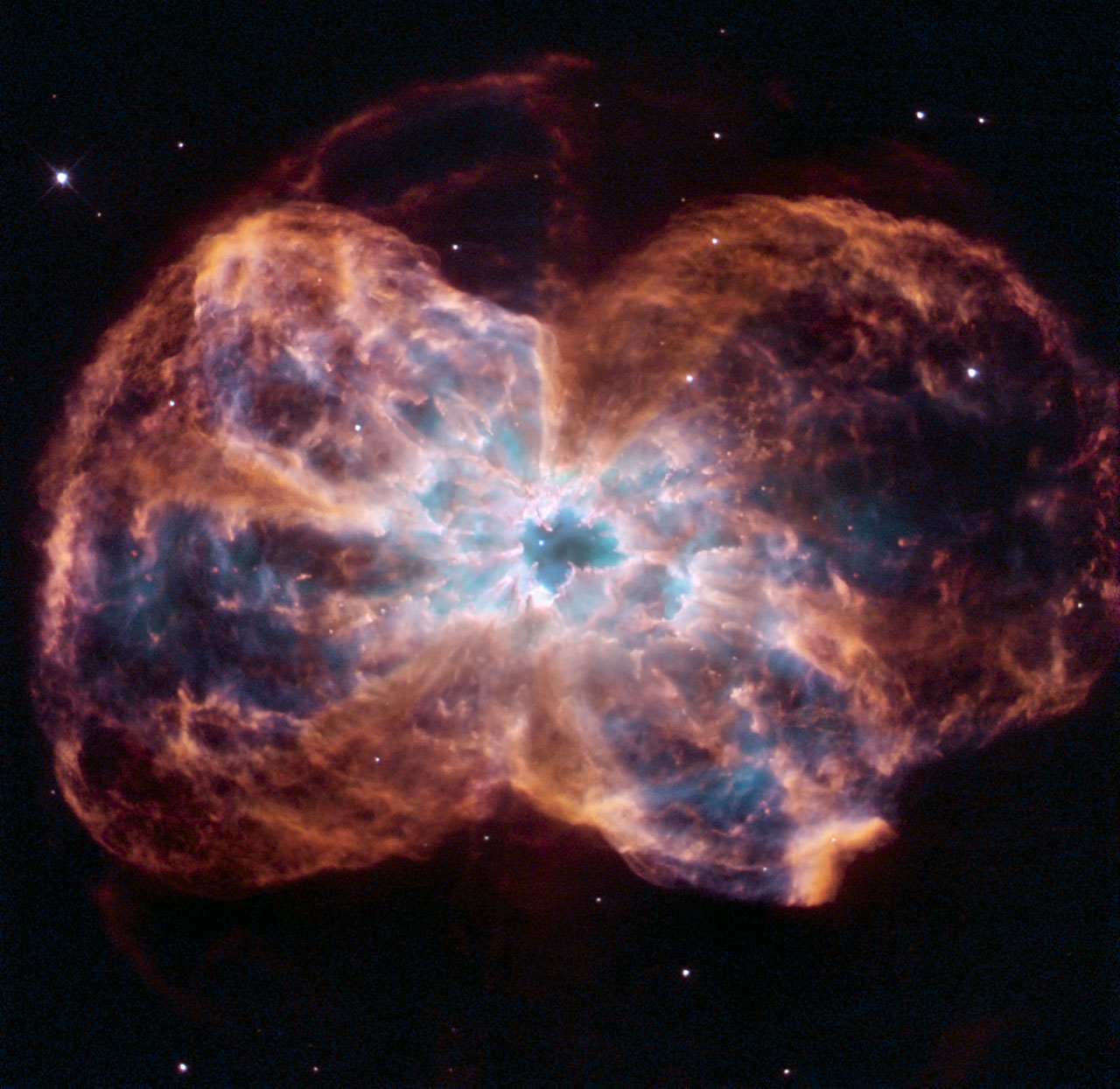
How do stars die?

Stars begin their lives when hydrogen fusion ignites in their dense, hot cores. Once that process starts, it's game on. The gravitational pull of all the mass of the star tries to squeeze it down into a tiny point, but the energy released by fusion pushes outward, creating a delicate balance that can persist for millions or even trillions of years.
Small stars live an incredibly long time. Because of their small stature, they don't need a lot of energy to balance the inward gravitational pull, so they only sip at their hydrogen reserves. In a bonus boost, the atmospheres of these stars constantly circulate, pulling fresh hydrogen down from the outer layers into the core, where it can fuel the continuing fire.
All told, a typical red dwarf star will happily burn hydrogen in its core for trillions of years. Not too shabby.
As these small stars age, they steadily become brighter until they just sort of vaguely sputter out, becoming an inert, boring lump of helium and hydrogen just hanging around the universe minding nobody's business but their own.
It's a sorrowful fate, but at least it's a quiet one.
The grand finale
When the massive stars in our universe die, it's much more violent. Because of the increased bulk of these stars, fusion reactions need to happen much faster in order to sustain the balance with gravity.
Despite being so much heavier than their red dwarf cousins, these stars have much shorter life spans: Within only a few million years (which given astronomical time scales might as well be next week) they die.
But when massive stars die, they go out in all their glory.Their huge size, means there's enough gravitational pressure to not only fuse hydrogen, but also helium. And carbon. And oxygen. And magnesium. And silicon. A good number of the elements on the periodic table are produced inside these giant stars near the end of their lives.
But once these stars form an iron core, the music stops and the party's over.
All that material surrounding the iron squeezes in on the core, but iron fusion doesn't release energy to counteract it. Instead, the core contracts to such incredible densities that electrons get shoved inside of protons, turning the entire core into a giant ball of neutrons.
Get the Space.com Newsletter
Breaking space news, the latest updates on rocket launches, skywatching events and more!
That neutron ball is able to — temporarily, at least — resist the crushing collapse, triggering a supernova blast. A supernova will release more energy in a week than our sun will release over the course of its entire 10-billion-year lifetime. The shock wave and material ejected during the explosion carves bubbles in the interstellar medium, disrupts nebulas, and even sends material spewing out of galaxies themselves..
It's one of the most spectacular sights in the entire universe. When supernovas happen in our neck of the galactic woods, the explosions are bright enough to appear during the day and can even be brighter than the full moon at night.
Pretty intense, and what a way to go.

One last show
It's the medium-size stars that suffer the worst fate. Too big to just go off quietly into the night and too small to trigger a supernova blast, they instead turn into gruesome monsters before finally turning themselves inside out.
For these medium stars (which includes stars like our sun), the problem is that once a ball of oxygen and carbon forms in the core, there isn't enough mass surrounding it to fuse it into anything heavier. So it just sits there, getting hotter by the day. The rest of the star reacts to that inferno in the core, swelling and turning red, producing a red giant. When our sun turns into a red giant, its edge will reach nearly the orbit of the Earth.
That red giant phase is unstable, and stars like our sun will convulse, collapsing and reinflating over and over, with each event launching winds carrying the bulk of the sun's mass out into the solar system.
In its final death throes, a medium-size star spews out its guts to form an effervescent planetary nebula, thin wisps of gas and dust surrounding the now-exposed core of carbon and oxygen at the center. That core gets a new name when exposed to the vacuum of space: a white dwarf.
The white dwarf illuminates the surrounding planetary nebula, energizing it for about 10,000 years before the stellar corpse cools too much to enable such light shows.
While beautiful and bewildering to behold in a telescope, planetary nebulas are the products of a violent, tortured death of a star. Alluring, yes, but also haunting to contemplate.
Learn more by listening to the episode "What happens when stars die?" on the Ask A Spaceman podcast, available on iTunes and on the Web at http://www.askaspaceman.com. Thanks to Mitchell L. for the questions that led to this piece! Ask your own question on Twitter using #AskASpaceman or by following Paul @PaulMattSutter and facebook.com/PaulMattSutter.
Follow us on Twitter @Spacedotcom and on Facebook.
Join our Space Forums to keep talking space on the latest missions, night sky and more! And if you have a news tip, correction or comment, let us know at: community@space.com.

Paul M. Sutter is an astrophysicist at SUNY Stony Brook and the Flatiron Institute in New York City. Paul received his PhD in Physics from the University of Illinois at Urbana-Champaign in 2011, and spent three years at the Paris Institute of Astrophysics, followed by a research fellowship in Trieste, Italy, His research focuses on many diverse topics, from the emptiest regions of the universe to the earliest moments of the Big Bang to the hunt for the first stars. As an "Agent to the Stars," Paul has passionately engaged the public in science outreach for several years. He is the host of the popular "Ask a Spaceman!" podcast, author of "Your Place in the Universe" and "How to Die in Space" and he frequently appears on TV — including on The Weather Channel, for which he serves as Official Space Specialist.









